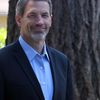Jose and DeShawn are building a robot in STEM lab. Their Problem Solving Block includes a customized playlist of 10-minute puzzles, challenges, and ST Math -- a visual and game-based approach to math. Every third day their playlist recycles through concepts they've already mastered to keep the skills fresh.
In Humanities Block, they watched a StudySync video about the book they are reading and writing about, Catcher in the Rye. Tomorrow they will be exploring post-World-War-II architecture and culture by touring Main Street with the help of GPS and a little augmented reality on their smart phone.
Their 9-a.m.-to-6-p.m. school day includes two activity breaks: one is an individual activity, the other one team-based. The school day is partially gender-segregated -- Jose and DeShawn admit that it helps them focus. The boys meet with an advisor three times a week to make sure they are making progress in all subjects and connected to youth and families services when needed.
That's a quick glimpse of my sense of a brain-based middle school day based on Brain Rules, the bestselling book by molecular biologist John Medina. In a spirited romp through neuroscience, evolutionary genetics, and psychology, Medina lays out "12 Principles for Surviving and Thriving at Work, Home, and School."
Following is a quick summary of the rules and key principles for educators.
- Exercise boosts brain power. "To improve your thinking skills, move." John recommends a recess twice a day.
Lessons are divided into 25-minute modules, cyclically repeated throughout the day. Subject A is taught for 25 minutes, constituting first exposure. Ninety minutes later the 25-minute content of Subject A is repeated, and then a third time. All classes are segmented and interleaved in such a fashion. Because these repetition schedules slow down the amount of information capable of being addressed per unit of time, the school year is extended into the summer.
If that's too complicated (or politically charged), John suggests review periods every three or four days.
Brain Rules would make a school leadership team discussion book.
For more, check out the resources and blogs on BrainRules.net.
